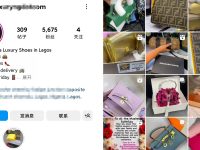Hello everyone, it’s the weekend again.
Today, the temperature dropped significantly across China — from over 30°C yesterday to just 15°C. A sudden chill!
The first thing I did after waking up was to check WhatsApp and follow up with a UK-based buyer who showed strong interest yesterday but was quite hesitant in the end.

This client was referred by a long-time customer. Years ago, when I was managing my own store, I built a network of high-quality clients. Occasionally, they still refer new buyers to me — an invaluable source of warm leads.
This time, the British client is sourcing some uniforms — most likely for wholesale purposes. Whenever a returning client refers someone, we do our best to fulfill their purchasing needs efficiently and reliably.
Now, let’s get into today’s topic:
How to Drive Off-site Traffic for Niche E-commerce Websites Focused on Designer-inspired Products
Why Off-site Traffic Matters
The niche e-commerce space for designer-inspired items tends to focus on fast-moving trends rather than long-term brand building. Unlike generic consumer goods that benefit from long-tail accumulation, this niche is more about efficient execution and strong short-term returns.
To operate an independent site successfully in this space, you need a dual strategy:
1. On-site optimization (UX, checkout flow, mobile responsiveness)
2. Off-site traffic generation (which we’ll focus on today)
A. Fast Traffic Channels
Fast traffic refers to immediate, high-volume traffic sources. These typically have higher acquisition costs and steeper learning curves. The main types include:
① Advertising Channels
This includes Facebook Ads, Google Ads, TikTok Ads, Bing Ads, etc. These are cost-per-click (CPC) based and vary by niche. For instance, in the fashion category, Facebook ads can easily hit $0.60 per click or more.

To achieve a positive ROI, ad creatives and funnel performance must be highly optimized. In our own network, some campaigns achieve ROIs of 5–10. Lower-CPC niches like sunglasses are easier to test and scale.
Another underutilized channel is native content ads, such as Quora Promoted Answers. These are less competitive and can be extremely cost-effective. You’ll need to target specific questions and align your ad content accordingly.
② Affiliate Traffic
This is traffic driven by affiliate partnerships. It’s common in industries like supplements, personal care, and health gadgets. Similar affiliate strategies work well for niche fashion e-commerce if structured correctly.

Potential affiliate partners include:
Niche influencers
Community admins (Reddit, Telegram, Discord)
Bloggers in your product category
Resellers with established storefronts
Make sure your website includes a robust affiliate tracking module. Platforms like Magento and OpenCart offer native or plugin-based solutions. For WordPress, custom development is often needed to ensure accuracy in referral tracking, commission payouts, and reporting.

③ Live Streaming
Live selling has emerged as a powerful way to drive real-time sales. It started with domestic platforms in China but has now gone global — with TikTok Live being a prime example.

The typical TikTok live funnel includes:
Account setup (ideally, using a matrix of niche-specific accounts)
Building vertical followers
Launching consistent livestream sessions
Early-stage live accounts often struggle, but once momentum builds, it can drive dozens — even hundreds — of orders per session. We’ve seen some merchants convert like crazy simply by showing product demos and answering live questions.
Live selling is no longer just about hype. Strategic livestreaming, especially when integrated with platforms like WhatsApp or Instagram for off-platform order processing, is now the go-to model for many.
B. Slow Traffic Channels
Slow traffic is about consistency, compounding, and long-term sustainability. While it doesn’t offer instant returns, it builds authority and organic customer acquisition over time.
① Search Engine Optimization (SEO)
This includes optimizing your own site, guest posting, participating in niche forums, and leveraging Q&A platforms like:
-
Reddit (subreddits for fashion, lifestyle, etc.)
-
Quora (via questions related to your product niche)
-
Watch-specific forums like RWI and RWG
Avoid outdated platforms like Yahoo Answers — they no longer offer viable traffic or SEO benefits.
If you’re interested in SEO tactics, refer to my previous article on White Hat SEO vs Black Hat SEO — it outlines safe strategies and risk zones in detail.
② Social Media & Community Channels
Platforms like:
-
Facebook Groups
-
Instagram niche accounts
-
Pinterest boards
-
Telegram private channels
These all offer community-driven growth and are ideal for establishing “private domain” traffic pools (i.e., direct access to your audience without platform algorithm limitations).

The trick is to focus on engagement and interaction, not just posting. Build value. Comment. Host small giveaways. Cultivate loyalty.
Serious SEO players even build niche blog websites using WordPress, deploying targeted articles to drive search visibility and build private domain traffic assets. All it takes is a solid theme and consistent publishing.
Final Words
Slow traffic strategies require patience. It may take 3–6 months or even longer before you see substantial results. But once it gains traction, it becomes a self-sustaining engine — outperforming fast traffic in cost-efficiency and stability.
If you’re someone who gives up easily or constantly changes direction, slow traffic won’t work for you. But for those willing to play the long game, the payoff is massive.





